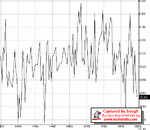Sharky
Staff
- Messages
- 5,950
- Likes
- 614
Hi all,
Does anyone have much experience with pair trading - that is to say, trading the realtionships between pairs of stocks (one that you go long on, the other you go short) enabling you to put on limited-risk traders without having to worry about overall market direction. I'd be interested to know if anyone has used this approach before, and with how much success.
Many thanks,
Sharky.
Does anyone have much experience with pair trading - that is to say, trading the realtionships between pairs of stocks (one that you go long on, the other you go short) enabling you to put on limited-risk traders without having to worry about overall market direction. I'd be interested to know if anyone has used this approach before, and with how much success.
Many thanks,
Sharky.

